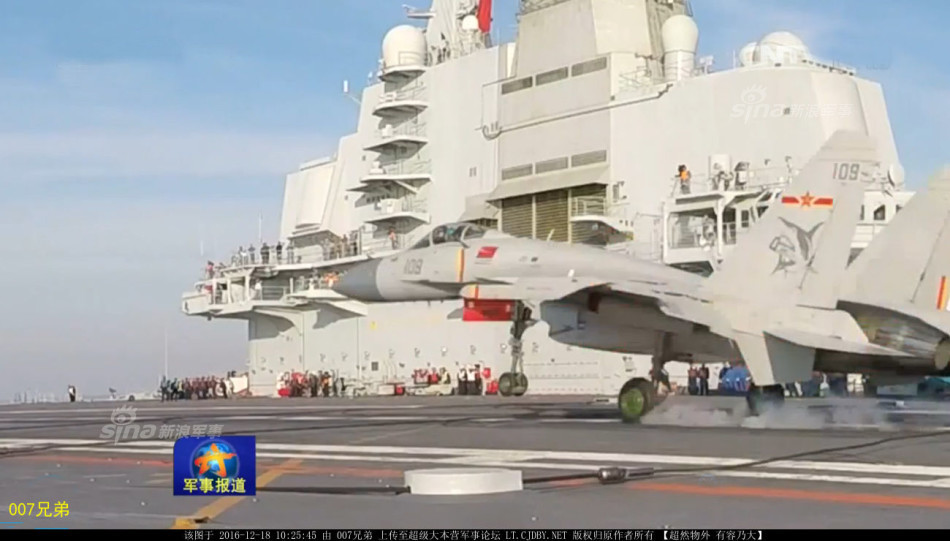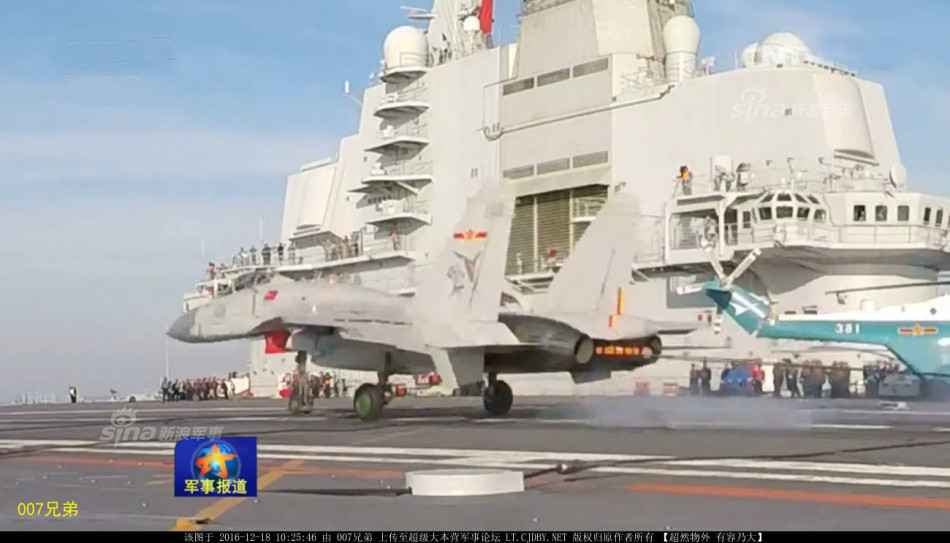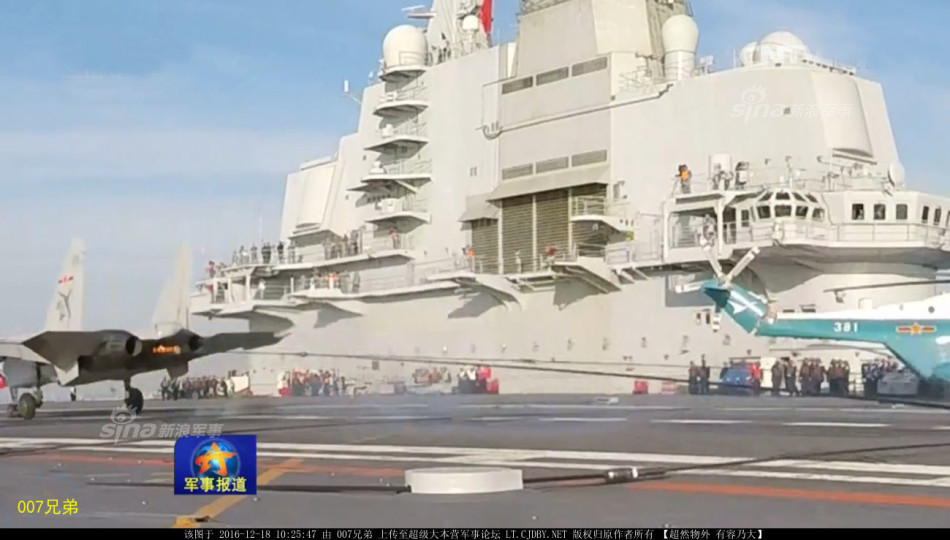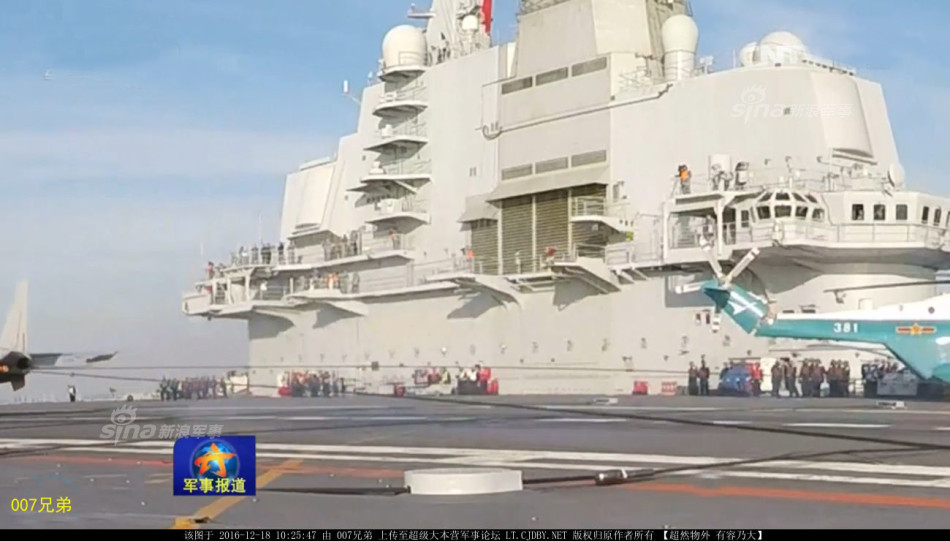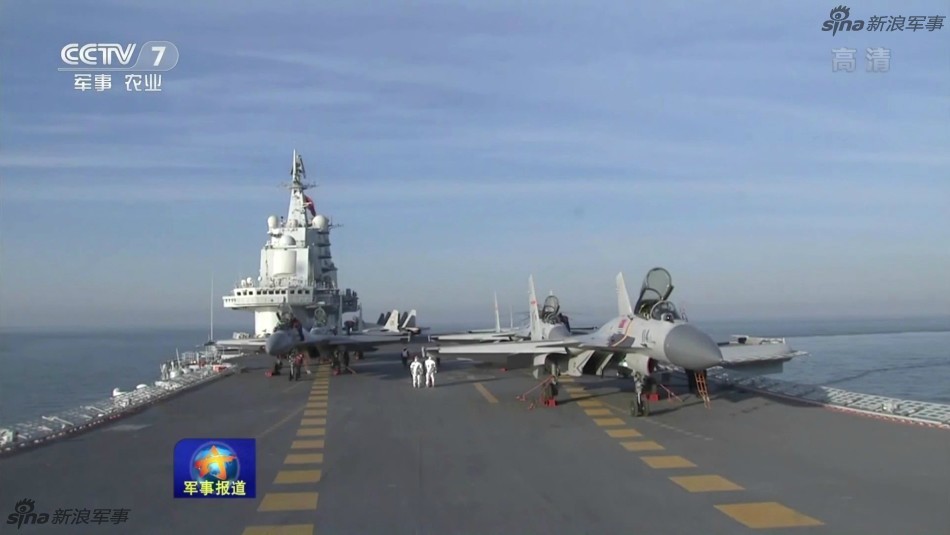but you just moved the goal post you set yourself. In your earlier argument you were talking about 'brain mush' as in the 'floating' brain hitting the inside skull in which NO external protection can mitigate and I'm saying I have not seen any naval aviator getting injured or died from that as a result of traps.
I have not moved my goal post anywhere. My position has always been: deceleration of an arrested landing on a CV generate enough force potentially damaging to head/brain --> one needs to device mechanism to mitigate such force --> one way is to give neck and back enough space so that they ca absorb the impact --> hence the large movement we see of the PLANAF pilot in the video clip.
Good question but in real life not a necessity. Approach speed about 135 knots down to zero in less than 2 seconds at about 750 ROD. Sounds scary but it really isn't. The human body and 'brain' won't be going places at those numbers.
G forces is minimal as well on the human body during landing. Glide path angle usually sets to 3.5% AOA about 8%. Idea is to catch the 3 wire so you land about 15 to 20. Ft before since they are 40 ft apart.
The acceleration during takeoff from a standpoint of lateral force is actually more than the deceleration for arrested landing.
The bold part in your post was the one that I was responding to. My understanding was that you insisted that protective mechanism is not a necessity. The deceleration of a plane on a CV is, as you put it, "sounds scary but isn't"
My point has always been: protective mechanism is a necessity. Hence my example of Jello in the below post to illustrate to you what would happen if you don't provide any of those impact-absorbing mechanisms, such as the large moving space for your neck and back. The "jello-in-the-box" example was meant to show you that the brain would be like a jello in a box without the neck and back.
the slap on the face is also an example of what would happen if you take away the neck and back. With the slap, the head/brain takes the brunt of the force, without any protection from neck and back.
Actually at that kind of deceleration, your body parts are moving all over the place, often against each other and bumping into each other. And this is especially bad for your brain, which is encased in a small and hard box of your skull. The brain is not tethered to the skull in any way. It is loosely "hanging" in there and free to move in whichever way it wants to. Even a simple slap on the face causes brain to move like crazy within the skull. Just imagine you have a glass lunchbox containing a piece of jello that is only slightly smaller than the box itself. Now you shake the box. Imagine how the jello moves... Your brain is literally the consistency of jello. And it is bumping into hard skull like mad in all directions even with a simple slap on the face.
Deceleration of an arrested landing on a CV is so much harder on your brain than a slap on your face. As Blackstone indicated, You absolutely need your neck and back to help cushioning the blow. Otherwise, your brain would slam into your skull so hard that it would bruise the brain and cause internal bleeding. So my guess is that the forward movement is actually an intended move to help cushioning the blow and prevent brain injury.
As you can see, I clearly indicated that head/brain injury would have occurred without the the protective mechanism. And the goal of the forward movement is to prevent head/brain injuries.
Like I said the impact on the 'brain' is minimal. I would argue a forceful slap or someone violently shaking your head is much more significant than landing on a carrier from a standpoint of TBI.
I've heard of back pains and maybe even pinch nerves from the impact but I've never heard of brain injury from naval aviators before due to deceleration unless he literally hits his head on something.
Compare to a high performance car. A car with very good brakes can stop a car from 60-0 in less than 100 ft. An aircraft going from 150 to 0 in 300 ft doesn't have significantly more impact on the brain.
Trust me I know what I'm talking about. There are a lot of things that's bad during traps however TMI isn't one of them.
Here you still insist that impact to the brain is minimal. I then tried to show you that it is not that the brain faces little danger but that the impact on the brain has been mitigated by the protective mechanisms in place: gears and appropriate arrangement of the cockpit, etc. My point is: if you take away the protection, the impact to the brain would be enough to cause injury. Thus, protective mechanism is a necessity, contrary to your initial point.
You don't hear about brain injuries for naval pilots because of all the protective procedures in place. The same also goes with high performance sports cars. Drivers also have sophisticated protective gear. Simply strapping them to their seats is not enough. Their safety belts/seats/front bumper/suspension are all designed to be strong yet still elastic enough to give way under impact, thus allow slower deceleration and prevent injuries.
Yes, sports cars can stop from 60 to 0 in 100 ft. However, keep in mind that no one does that kind of stopping on a regular basis. It's more of an emergency thing. Human body can take occasional damaging impact. Arrested landing on a CV on the other hand is something naval pilots have to do on a regular basis. Sustained damaging impact will cause injuries. So it makes sense that pilots need much more protection than a sports car driver.
As you mentioned, naval pilots do sustain injuries, like pain and pinched nerve. Nerve pain is a sign of damaged nervous system. This is evidence that the arrested landing does damage human central nervous system, which includes back, neck and brain. This is also evidence that the protective gear has worked. An important part of human anatomy is that one of the essential jobs of our neck and back is to absorb impact and protect our brain. Under any impact, our neck and back take the brunt of the impact. The damage has stopped at the level of neck and back because the protective gear allows neck and back to absorb the impact.
If the naval pilots are simply strapped to their seats tightly, their neck and back would be pinned to the back of the seats, rendering them useless. Then their head and brain would be taking the brunt of the impact. Then you will hear more head/brain injuries. You don't hear too many head injuries because the cockpit design has worked and effectively stopped the impact at the level of neck and back.
Please keep in mind that we are arguing why the naval pilot in the video clip shown above move so much forward during landing on a CV. My view is that it is an important part of the design of the cockpit aimed to protect the pilot.
As you can see, my goal post has not moved an inch.
My interpretation of your position is that the wild forward movement is not necessary because the deceleration of a fighter jet on a CV does not generate force to injure the brain.
My counter is that the movement of the jet is violent enough to cause injury, which has been mitigated by the protective mechanism such as large forward movement of the pilot. I have been consistent throughout our discussion.


